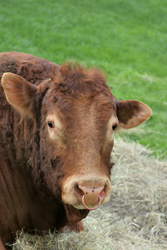Tracking and tracing for enhanced beef safety
The 'Operational management and geodecisional prototype to track and trace agricultural production' (OTAG) project was a Specific Support Action (SSA) focused on future Community research and technological development (RTD) policy activities. Dedicated to intensive beef production, these included activities related to monitoring and assessment of food safety and security in the context of Southern Cone Countries (the southernmost nations of the South American continent) and EU policies. OTAG partners worked on developing a sustainable, easily understood system for tracking and tracing emerging risks in beef production. Monitoring cattle through their environment, via electronic collars, offers a means of managing regional pasture use as well as the spread of diseases. With this in mind, the project sought to deliver a geodecisional system operational under controlled conditions and using the latest geospatial and geocommunication technologies. The computational architecture supporting the OTAG prototype has four layers, with the first relating to data collected from electronic devices in the paddock. The information generated is sent via computer to the farm headquarters, where the second layer is responsible for storing data. The data from each farm in the OTAG system is then sent to the third layer through Web-service technology. This gathering of data makes it possible to analyse information, on the fourth layer, regarding animal movement within and between farms, using techniques popular for dealing with geo-referenced information. The logic behind such an approach is best understood in reference to a standing example of where the OTAG system could work. In the case of an outbreak of foot and mouth disease (FMD), being able to track animal interactions can help localise contaminated animals, assist the actions of sanitary authorities, isolate better-producing regions and minimise the impact and spread of the outbreak. Results of the OTAG project have led to a subsequent project proposal inviting private sector partners to expedite the commercialisation of the proposed prototype technologies. Public-private partnerships can go a long way in efforts to disseminate technological innovations. As such, plans are in place for the OTAG Collar technology developed in France to be exported to Argentina and Brazil.







